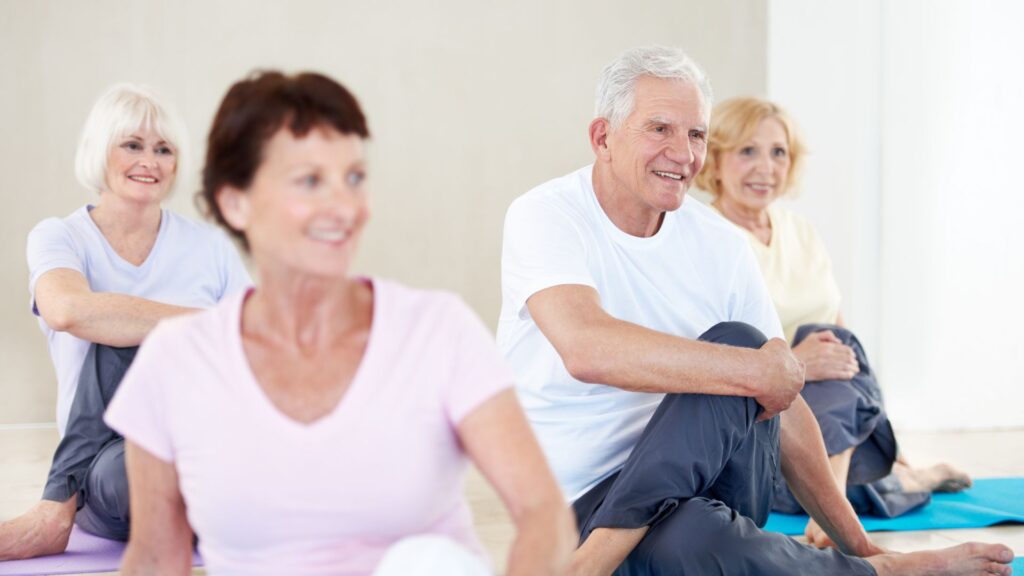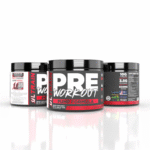A diagnosis of urinary incontinence doesn’t mean your active life is over. While managing bladder leaks requires some planning and the right incontinence products, millions of men continue exercising, traveling, and maintaining vibrant social lives despite this condition. The key is preparation, confidence, and refusing to let incontinence define what you can and cannot do.
Exercise and Physical Activity
One of the biggest concerns men have about urinary incontinence is whether they can continue exercising. The good news: not only can you exercise with incontinence, but regular physical activity can actually help improve bladder control over time.
Starting Slowly: If you’re newly dealing with incontinence or returning to exercise after a period of inactivity, start with low-impact activities. Walking is excellent for overall health and puts minimal stress on the pelvic floor. Swimming provides wonderful cardiovascular benefits while the water supports your body. Cycling can be good as well, though saddle pressure may increase urgency for some men.
Building Core Strength: Contrary to what you might think, strengthening your core muscles actually supports better bladder control. Exercises like planks, bridges, and modified sit-ups engage the pelvic floor along with abdominal muscles. However, avoid exercises that create excessive intra-abdominal pressure, such as heavy lifting or intense crunches, until your pelvic floor is stronger.
High-Impact Activities: Running, jumping rope, basketball, tennis, and other high-impact sports are possible with incontinence, but they require good management strategies. These activities create sudden pressure changes that can trigger leaks. Ensure you have reliable protection in place, empty your bladder before exercising, and consider working with a pelvic floor physical therapist to strengthen the muscles that provide continence during dynamic movements.
Gym Confidence: Many men worry about leaks at the gym. Wearing dark-colored workout pants provides visual discretion, and using effective leak protection means you can focus on your workout rather than potential accidents. Choose equipment wisely – machines that put pressure on the lower abdomen might trigger urgency, so treadmills or ellipticals might be better than exercise bikes initially.
Traveling with Confidence
Travel presents unique challenges for men with incontinence, but with proper planning, you can explore the world without anxiety.
Packing Essentials: Create a travel kit that includes extra supplies, disposal bags, cleansing wipes, a change of clothes, and any skin protection products you use. Pack more than you think you’ll need – better to have extras than run short in an unfamiliar place.
Flight Strategies: Choose an aisle seat for easy bathroom access. Stay hydrated but moderate fluid intake during the flight. Compression from sitting can increase pressure on the bladder, so stand and walk periodically. If you’re concerned about long flights, consider using extra protection or limiting liquids in the hours before departure.
Hotel Accommodations: Request a room close to elevators for quicker bathroom access. Some men appreciate ground-floor rooms for the same reason. Modern hotels are generally understanding about requests related to medical conditions.
Activity Planning: Research bathroom locations at tourist destinations beforehand. Many travel apps and websites now include this information. Plan sightseeing in manageable chunks rather than marathon sessions. Remember, frequent breaks enhance everyone’s travel experience, not just yours.
Road Trips: Map out rest stops before departure. Convenience stores, fast-food restaurants, and highway rest areas provide regular bathroom access. Consider travel urinals for emergencies, though most men find that with proper planning and effective leak protection, these are rarely necessary.
International Travel: Different cultures have different bathroom facilities. Research what to expect at your destination. Pack supplies from home since your preferred products might not be available abroad. Learn basic phrases in the local language for asking where restrooms are located.
Maintaining Social Connections
Social isolation is one of the most damaging consequences of untreated or poorly managed incontinence. Humans are social creatures, and maintaining connections is vital for mental health and quality of life.
Restaurant Outings: Arrive a few minutes early to locate restrooms before meeting friends. Choose seats near the restroom if possible, but don’t obsess over it – you’re there to enjoy company, not analyze seating logistics. Moderate alcohol and caffeine consumption as both can increase urgency.
Sporting Events and Concerts: Scout bathroom locations when you arrive. Aisle seats provide easier access without disturbing others. Go during less crowded times like just after the event starts rather than at intermission when everyone goes. Consider limiting beverages during the event.
Social Gatherings: House parties and family gatherings can trigger anxiety about bathroom access. Remember that frequent bathroom trips are common for many people and generally go unnoticed. If you’re comfortable, you might even mention you’re dealing with a medical issue – most people are understanding and supportive.
Dating and New Relationships: This deserves special mention as it’s a significant anxiety source. When dating, choose activities that don’t revolve around excessive drinking. Be discreet but don’t let anxiety control your choices. If a relationship progresses, having an honest conversation about your condition can deepen intimacy and trust. Many men find that partners are far more understanding than anticipated.
Sports and Recreation
Don’t give up hobbies and recreational activities you love. With adaptation, most can continue.
Golf: This is particularly manageable since courses have bathrooms at regular intervals and the pace allows for breaks. Many golfers deal with urgency issues, so you’re in good company.
Fishing and Hunting: These activities involve long periods outdoors away from facilities. Plan accordingly with portable solutions and effective leak protection. The relaxed pace generally makes management easier.
Team Sports: Whether it’s softball leagues, basketball pick-up games, or group cycling, staying active with friends is valuable. Communicate with teammates if needed – most will be supportive and accommodating.
Water Activities: Swimming, kayaking, and boating are excellent options. Water activities naturally involve getting wet, reducing anxiety about potential leaks. Just ensure you manage hygiene appropriately.
Building Confidence Over Time
Managing an active lifestyle with incontinence gets easier with experience. You’ll learn your body’s patterns, identify your triggers, and develop routines that work for your situation.
Track Patterns: Keep a bladder diary for a few weeks to understand when leaks are most likely to occur. This knowledge allows better planning.
Identify Triggers: Common triggers include caffeine, alcohol, certain foods, cold weather, running water sounds, and stress. Knowing yours helps you prepare.
Develop Routines: Pre-activity bathroom visits, strategic fluid timing, and having supplies ready become second nature.
Stay Positive: Focus on what you can do rather than limitations. Celebrate successes and learn from challenges without self-criticism.
The Role of Effective Management
None of these strategies work well without effective leak management. The right products make the difference between anxious restriction and confident participation in life.
Consider what’s important for your lifestyle. If you’re active, you need something secure that won’t shift during movement. If you’re social, discretion matters. If you’re traveling, reliability is crucial. The best solution provides security without compromising comfort, allows normal activities without constant awareness, and gives you the confidence to focus on experiences rather than accidents.
Pacey Cuff was specifically designed for active men who refuse to let incontinence sideline them. Unlike bulky pads or painful traditional clamps, Pacey Cuff provides 90-95% leak reduction while maintaining proper blood flow and all-day comfort. The lightweight, discreet design means you can exercise, travel, and socialize without constantly thinking about your incontinence management. Users report confidently returning to hiking, golfing, working full days, and traveling extensively, activities they’d stopped due to inadequate solutions.
The adjustable design accommodates various activity levels, from desk work to vigorous exercise, making it ideal for men who maintain active lifestyles. With over 20,000 satisfied users, Pacey Cuff proves that effective management allows you to live fully rather than cautiously. The metal-free, latex-free construction ensures comfort during all-day wear, whether you’re on a plane, in a business meeting, or on the golf course.


